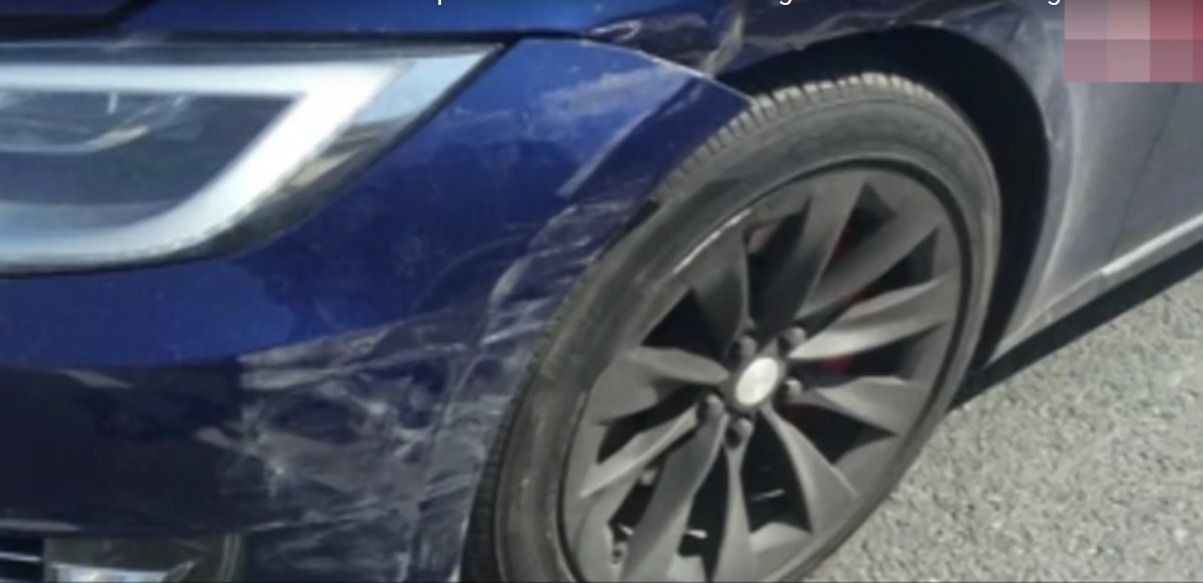The Chinese auto market is the biggest in the world and it just might also be the most influential. Tesla found that out the hard way when it was forced to acknowledge a mistake it made on its Chinese website describing its Autopilot system as a “self-driving” feature. The terminology has since been scrubbed from the website and replaced with a phrase that more closely translates to “self-assisted driving.”
The brouhaha started when Luo Zhen, a Chinese owner of a Tesla Model S, sideswiped a stopped car along the side of a road when his Model S’s Autopilot system engaged. Luo spoke with Reuters in the aftermath of the incident, calling Tesla and its local sales staff out for misrepresenting the technology’s capabilities by touting its functions using a phrase that translated to “self-driving.” Luo’s claims of misrepresentation were corroborated by other owners of Tesla models in the country, with some, including Luo, even saying that demonstrators took their hands off the steering wheel and then took their feet off the pedals to showcase the system’s capabilities.
Tesla admitted that the crash took place but the normally stubborn automaker was also forced to take the unusual step of acknowledging the mistake it made on its website. A Tesla spokesperson spoke with Reuters after the changes in the website to deny that Luo’s crash and the publicity it generated were the reasons behind the edits. According to the spokesperson, the change was simply part of Tesla’s “ongoing work in improving translations.”
Unfortunately, a spin like that is as obvious as it is blatant. That or the timing of the edits in the wake of the crash’s publicity can be chalked up to a happy coincidence. In any case, Reuters also learned that the electric car maker has reached out to its staff in the country retraining them to inform future customers that the Autopilot system is a “self-assisted technology” and that drivers must always have their hands on the wheel when engaging the system.
It’s unclear if Tesla if going to make a similar move in rephrasing the system’s capabilities in other markets, but the fact that it had to do it in China goes to show how important that market is for the company and any attempts at pissing it off would be bad for business.
Reuters
Reuters0}
Tesla can say whatever it wants to say here, but there are too many coincidences here for the company’s statement to be true. For one, the timing of the website is suspicious as it happened days after Continue after the jump to read the full story. story on Luo Zhen and his Tesla Model S accident gained traction throughout social media. That’s not to say that it shouldn’t have done it because it absolutely needed to be changed before another Tesla owner comes out and calls out the company for the false advertising.
That said, I understand why Tesla did it, even if it doesn’t look right on the surface. Making the changes now saves the company a lot of trouble if another crash happens that ends up getting someone hurt of worse, killed. Changing it now, even if it looks bad for the company, means that Tesla is treating the issue with the seriousness it deserves, something that I don’t think it hasn’t done in the multiple reported crashes here in the U.S.
Maybe this is the wake-up call Tesla needed to really promote the Autopilot system as it is intended to be, not as it is perceived to be. The company has done that in some ways in the past, but this is by far the biggest admission of a mistake that Tesla has made since the technology became available.
Personally, I applaud Tesla for addressing this. Now I hope the company takes it a step further and does the same in other markets, including here in the US. Be absolutely clear with the features of the Autopilot system and save yourselves the headache and embarrassment of being called out in public once again.

